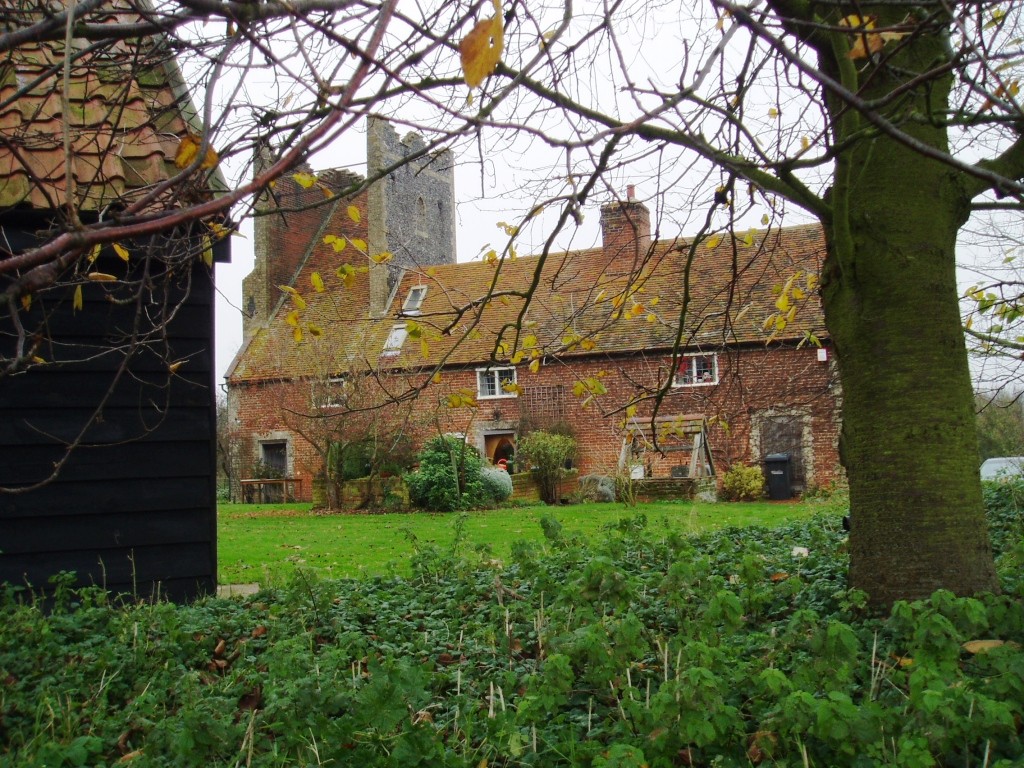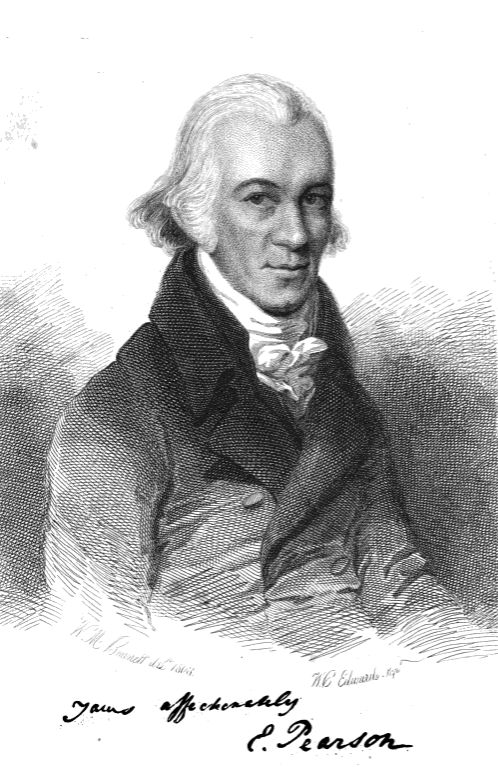|
Tattingstone
Tattingstone is a village and civil parish in Suffolk, England on the Shotley peninsula about south of Ipswich. The 2011 Census recorded the population as 540. History The Domesday Book of 1086 records the toponym as ''Tatituna'' or ''Tatistuna''. It the location of Tattingstone Place and the folly known as the Tattingstone Wonder, a row of cottages disguised as a church by adding a flint façade and a dummy tower. The parish has three distinct settlements. The main settlement includes the church, Tattingstone Park and the former Samford House of Industry, or Workhouse (1766–1930). This site was used as St Mary's hospital until it was redeveloped for housing in 1991. Tattingstone Heath is located on the A137, whilst a small hamlet close to the White Horse is connected to the rest of the parish by Lemons Hill bridge over the western end of Alton reservoir. The Tattingstone Estate was bequeathed to Mr Western by his father's first cousin Thomas White in 1808. Tattingstone Ch ... [...More Info...] [...Related Items...] OR: [Wikipedia] [Google] [Baidu] |
Tattingstone Wonder
The Tattingstone Wonder is a folly at Tattingstone in Suffolk, England. Located some south of Ipswich the Tattingstone Wonder was originally two cottages. In 1790 Edward White, the local squire In the Middle Ages, a squire was the shield- or armour-bearer of a knight. Use of the term evolved over time. Initially, a squire served as a knight's apprentice. Later, a village leader or a lord of the manor might come to be known as a " ..., did not like his view of the cottages from Tattingstone Place. He decided to add a third cottage and finished them to look like a church by adding a fake tower and flint façade. It has become a famous Suffolk landmark. References ;Notes ;Sources * * * Folly buildings in England Buildings and structures in Suffolk Grade II* listed buildings in Suffolk Babergh District {{Suffolk-struct-stub ... [...More Info...] [...Related Items...] OR: [Wikipedia] [Google] [Baidu] |
Murder Of Bernard Oliver
Bernard Michael Oliver (1950 – January 1967) was a young British warehouse worker from Muswell Hill, North London. He disappeared on 6 January 1967, and his remains were found ten days later in the village of Tattingstone, Suffolk. His body had been cut into eight pieces and left in two suitcases. For this reason the crime is sometimes referred to as the Tattingstone Suitcase Murder. The case received widespread media attention, partly because police, unable to identify the body, took the unusual step of releasing a photograph of the victim's head to the media. The murder remains unsolved. Disappearance and murder On Friday, 6 January 1967, Oliver did not return home after spending the evening with friends, and was reported missing by his father the following morning. Several days later, on 16 January, farm worker Fred Burggy discovered human remains in two suitcases left behind a hedge in a field near the village of Tattingstone, Suffolk. It was believed that the murder had occu ... [...More Info...] [...Related Items...] OR: [Wikipedia] [Google] [Baidu] |
Folly
In architecture, a folly is a building constructed primarily for decoration, but suggesting through its appearance some other purpose, or of such extravagant appearance that it transcends the range of usual garden buildings. Eighteenth-century English landscape gardening and French landscape gardening often featured mock Roman temples, symbolising classical virtues. Other 18th-century garden follies represented Chinese temples, Egyptian pyramids, ruined medieval castles or abbeys, or Tatar tents, to represent different continents or historical eras. Sometimes they represented rustic villages, mills, and cottages to symbolise rural virtues. Many follies, particularly during times of famine, such as the Great Famine (Ireland), Great Famine in Ireland, were built as a form of poor relief, to provide employment for peasants and unemployed artisans. In English, the term began as "a popular name for any costly structure considered to have shown wikt:folly#Noun, folly in the builde ... [...More Info...] [...Related Items...] OR: [Wikipedia] [Google] [Baidu] |
Basil Snell
The Ven. Basil Clark Snell (2 February 1907 – 12 June 1986) was an eminent Anglican priest in the mid twentieth century. Snell was educated at The King's School, Canterbury and Queens' College, Cambridge. He was ordained in 1933 and began his career with a curacy at St Kentigern's, Crosthwaite. After this he was Chaplain of Aldenham School and then Loretto School. During the war he was a Chaplain to the British Armed Forces. He was Rector of Tattingstone from 1947 to 1955 when he became a Residentiary Canon of St Edmundsbury Cathedral. He was Archdeacon of Bedford from 1958 until 1962 and of |
Ann Candler
Ann Candler (1740–1814) was a poet, known as "The Suffolk Cottager", whose works appeared in the ''Ipswich Journal'' and a volume published toward the end of her life. Life Ann More was born at Yoxford, Suffolk, 18 November 1740, one of the children of William More, a glover there; her mother was a daughter of Thomas Holder of Woodbridge, the surveyor of the window-lights for that part of the county. In 1750 her father moved to Ipswich, where his wife died in 1751. Ann taught herself to read and write, and studied all accessible travels, plays, and romances. In 1762 she married Candler, a cottager in Sproughton, a village about three miles out of Ipswich. From 1763 to 1766 Candler served in the militia (''Poetical Attempts'', p. 5), and this service, combined with the man's drinking habits, kept Ann and her growing family poor. In 1777 Candler enlisted in the line; Ann was forced to put four of her six children into the workhouse, and was herself upon a sick bed for ele ... [...More Info...] [...Related Items...] OR: [Wikipedia] [Google] [Baidu] |
Edward Pearson (theologian)
Edward Pearson (1756–1811) was an English academic and theologian, Master of Sidney Sussex College, Cambridge from 1808. Life He was born at St. George's Tombland in Norwich on 25 October 1756, eldest son of Edward Pearson (d. 1786) a wool-stapler there, who shortly moved to Tattingstone, Suffolk and was governor of the local poorhouse. He was educated at home, and entered Sidney Sussex College, Cambridge as sizar, on 7 May 1778. The Rev. John Hey, the college tutor, who held the rectory of Passenham, Northamptonshire, appointed him his curate (26 April 1781). Pearson was ordained by John Hinchliffe, the Bishop of Peterborough, on 26 June 1781; he graduated B.A. in 1782, M.A. 1785, and B.D. 1792, and was elected Fellow of his college. Early in 1788 he became tutor of Sidney Sussex College, and took on the curacy of Pampisford, about seven miles from Cambridge. He had previously held curacies not only at Passenham, but then also at Cosgrove, and at Strutton. In 1796 Pearson l ... [...More Info...] [...Related Items...] OR: [Wikipedia] [Google] [Baidu] |
Charles Boileau Elliott
Charles Boileau Elliott (1803–1875) was an English travel writer. He published 3 travel diaries in his lifetime. His best known works are ''Letters from the North of Europe'', ''Travels in the Three Great Empires'', and ''Travels in the Archipelago.'' All 3 books provide a unique historical account of life in those areas during the mid 1800s just prior to the wars and industrial achievements that would be coming later in the 20th century. Life Elliott was educated at Harrow School and Haileybury College. He spent some time working for the East India Company. He matriculated at Queens' College, Cambridge in 1829, graduating B.A. in 1833, and M.A. in 1837. He became vicar of Godalming in Surrey in 1833, and rector of Tattingstone in Suffolk in 1838. During the writing of his most famous work, ''Travels in the Three Great Empires'', he wrote extensively about the political, social, and economic conditions of the day in what is now Austria, Russia, Hungary, Prague, Slovenia, Crim ... [...More Info...] [...Related Items...] OR: [Wikipedia] [Google] [Baidu] |
John Preston Neale
John Preston Neale (1780–1847) was an English architectural and landscape draughtsman. Much of his work was drawn, although he produced the occasional watercolour or oil painting. His drawings were used on a regular basis by engravers. A major work, th''Views of the seats, Mansions, Castles, etc. of Noblemen and Gentlemen in England, Wales, Scotland and Ireland''was published in 6 volumes between 1819-23. Biography Neale's earliest works were drawings of insects. While in search of specimens in Hornsey Wood in the spring of 1796, Neale met John Varley the water-colour painter. Together they projected a work to be entitled ''The Picturesque Cabinet of Nature'', for which Varley was to make the landscape drawings, and Neale was to etch and colour the plates. No. 1 was published on 1 September 1796, but no more appeared. Neale was a clerk in the General Post Office, but eventually resigned his appointment to devote his time to art. Neale died at Tattingstone, near Ipswich, aged ... [...More Info...] [...Related Items...] OR: [Wikipedia] [Google] [Baidu] |
United Kingdom Census 2011
A Census in the United Kingdom, census of the population of the United Kingdom is taken every ten years. The 2011 census was held in all countries of the UK on 27 March 2011. It was the first UK census which could be completed online via the Internet. The Office for National Statistics (ONS) is responsible for the census in England and Wales, the General Register Office for Scotland (GROS) is responsible for the census in Scotland, and the Northern Ireland Statistics and Research Agency (NISRA) is responsible for the census in Northern Ireland. The Office for National Statistics is the executive office of the UK Statistics Authority, a non-ministerial department formed in 2008 and which reports directly to Parliament. ONS is the UK Government's single largest statistical producer of independent statistics on the UK's economy and society, used to assist the planning and allocation of resources, policy-making and decision-making. ONS designs, manages and runs the census in England an ... [...More Info...] [...Related Items...] OR: [Wikipedia] [Google] [Baidu] |
University Of Cambridge
, mottoeng = Literal: From here, light and sacred draughts. Non literal: From this place, we gain enlightenment and precious knowledge. , established = , other_name = The Chancellor, Masters and Scholars of the University of Cambridge , type = Public research university , endowment = £7.121 billion (including colleges) , budget = £2.308 billion (excluding colleges) , chancellor = The Lord Sainsbury of Turville , vice_chancellor = Anthony Freeling , students = 24,450 (2020) , undergrad = 12,850 (2020) , postgrad = 11,600 (2020) , city = Cambridge , country = England , campus_type = , sporting_affiliations = The Sporting Blue , colours = Cambridge Blue , website = , logo = University of Cambridge logo ... [...More Info...] [...Related Items...] OR: [Wikipedia] [Google] [Baidu] |
Sidney Sussex College, Cambridge
Sidney Sussex College (referred to informally as "Sidney") is a constituent college of the University of Cambridge in England. The College was founded in 1596 under the terms of the will of Frances Sidney, Countess of Sussex (1531–1589), wife of Thomas Radclyffe, 3rd Earl of Sussex, and named after its foundress. It was from its inception an avowedly Protestant foundation;Sidney Sussex College website; history "some good and godlie moniment for the mainteynance of good learninge". In her will, Lady Frances Sidney left the sum of £5,000 together with some plate to found a new College at Cambridge University "to be called the Lady Frances Sidney Sussex College". Her executors [...More Info...] [...Related Items...] OR: [Wikipedia] [Google] [Baidu] |





